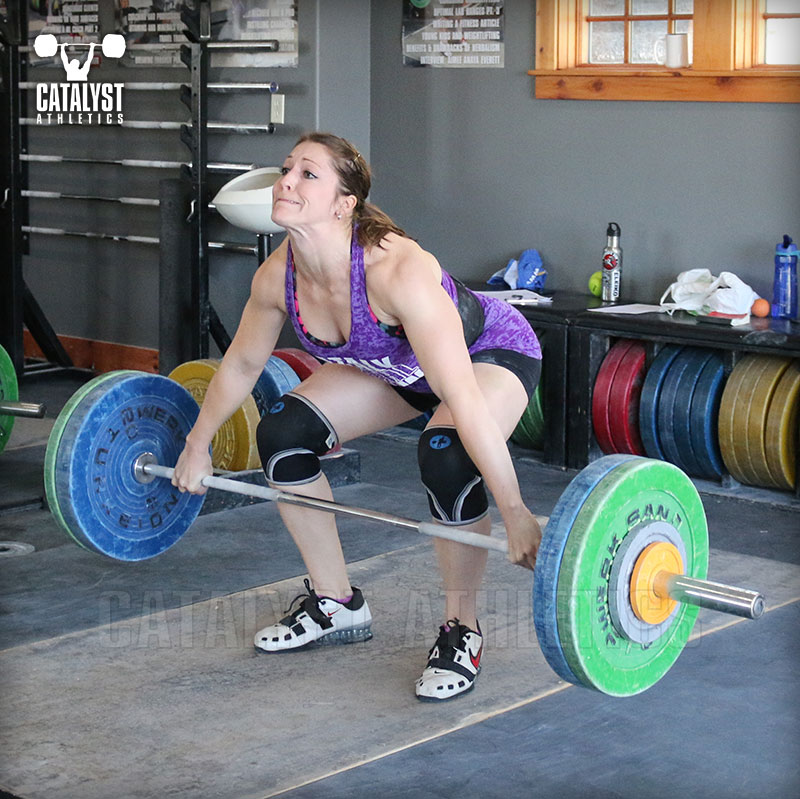Articles
Ask Greg: Long Limbs & The Pull
October 29 2020

October 29 2020

Charlie Asks: Thanks for putting all of your knowledge out there and making it accessible. My question pertains to body type. Specifically long limbed people with short torsos who struggle getting their knees out of the way in the first and second pulls. My set up is not terrible, my hips rise a bit faster as I work to get the bar past my knees into optimal position, and I’m seeing a lot more consistently made lifts in both clean and snatch. Just wondering if you had any advice for someone who has super long legs and arms and a shorter trunk. Thanks!
Greg Says: The sad reality is that the lifts will always a bit more of a technical challenge for you than for your mesomorphic counterparts—the snatch and clean & jerk unquestionably favor certain proportions and punish those outside ideal parameters.
Of course, that doesn’t mean you can’t lift well, it just means you make have to put more time and effort into refining your technique before you arrive at something that provides you consistent and reliable lifts.
Really your goal is simply to hit the same basic points of the starting position and first pull as anyone else:
What, as you know, makes this more difficult for you is that your thighs span so far fore-aft. The biggest help you’re going to get is spreading the knees to the sides as much as you can, which effectively reduces that distance and makes navigating the bar past the knees a bit easier.
Next will be starting the bar a bit farther forward over the foot than we would normally want—this clears more space for the shins to tilt forward, but also means you have more time before the bar catches up with the shins/knees as it rises and they move back.
Finally, moving the shoulders slightly farther forward over the bar compared to a more “standard” setup will give you a bigger margin of error to get past the knees, but also should help bring your hips just a bit higher relative to the knees to make the lift off the floor somewhat easier.
Experiment with a wider stance as well—this will work along with getting the knees out but prevent an extreme angle that weakens the push against the ground.
After the bar is past the knees, you don’t really have any more excuses—the rest of the lift works just about the same as for everyone else. One caution, however, is to be patient initiating the second pull and really stay over the bar until it’s approaching mid-thigh before opening the hips. You may also have a natural tendency to cut the pull short because you’re convinced it will help make up for the extra distance you have to cover to get under the bar due to your height, but just like everyone else, you have to create time and space with acceleration and elevation to actually maximize your opportunity to get under it. Follow through with the extension, and continue actively lifting the bar in the turnover as you squat under.
Greg Says: The sad reality is that the lifts will always a bit more of a technical challenge for you than for your mesomorphic counterparts—the snatch and clean & jerk unquestionably favor certain proportions and punish those outside ideal parameters.
Of course, that doesn’t mean you can’t lift well, it just means you make have to put more time and effort into refining your technique before you arrive at something that provides you consistent and reliable lifts.
Really your goal is simply to hit the same basic points of the starting position and first pull as anyone else:
- Bar over the balls of the foot or farther toward the toe likely for you
- Weight balanced over the whole foot
- Knees over the bar
- Shoulder joint directly above or slightly in front of the bar
- Knees out as far as they can go inside the arms
What, as you know, makes this more difficult for you is that your thighs span so far fore-aft. The biggest help you’re going to get is spreading the knees to the sides as much as you can, which effectively reduces that distance and makes navigating the bar past the knees a bit easier.
Next will be starting the bar a bit farther forward over the foot than we would normally want—this clears more space for the shins to tilt forward, but also means you have more time before the bar catches up with the shins/knees as it rises and they move back.
Finally, moving the shoulders slightly farther forward over the bar compared to a more “standard” setup will give you a bigger margin of error to get past the knees, but also should help bring your hips just a bit higher relative to the knees to make the lift off the floor somewhat easier.
Experiment with a wider stance as well—this will work along with getting the knees out but prevent an extreme angle that weakens the push against the ground.
After the bar is past the knees, you don’t really have any more excuses—the rest of the lift works just about the same as for everyone else. One caution, however, is to be patient initiating the second pull and really stay over the bar until it’s approaching mid-thigh before opening the hips. You may also have a natural tendency to cut the pull short because you’re convinced it will help make up for the extra distance you have to cover to get under the bar due to your height, but just like everyone else, you have to create time and space with acceleration and elevation to actually maximize your opportunity to get under it. Follow through with the extension, and continue actively lifting the bar in the turnover as you squat under.
